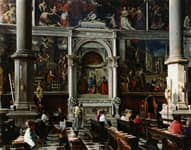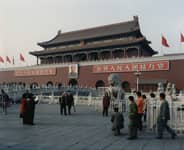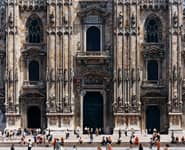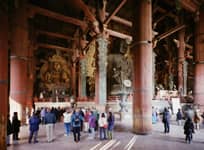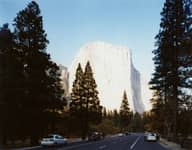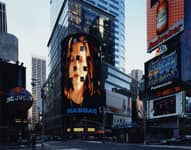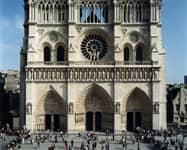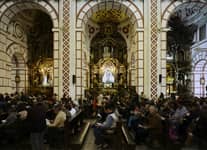Growing out of his work in 1990 at the Pantheon in Rome, between 1995 and 2003 Struth made an ‘extended family’ of works in temples, churches, cathedrals and tourist sites which incorporated groups of people who had come to these places as cultural tourists or religious believers: places which, in Struth’s eyes, offer “monumental emotional packages of overwhelming experience.”
In San Zaccaria, Venice (1995) Struth constructed his composition around the central figures of the Madonna and Child in Giovanni Bellini’s Sacra Conversazione and included a number of visitors involved in different acts of looking, from aesthetic to religious contemplation. Struth had been introduced to Bellini’s painting by the Scottish art historian Giles Robertson, the subject of two of Struth’s earliest portraits.
“Looking at works which had not been isolated from their original context, which were still in the place and perhaps in the belief system for which they had originally been made, stimulated new possibilities. Having been raised as a Catholic I was reluctant to expand my work from the realm of art-historical museums into the domain of the religious.”
In 1998 Struth made a number of works in places of Christian worship including Milan Cathedral and Monreale in Palermo. In 1999 he returned to the Buddhist temple complex at Nara in Japan which he had first visited in 1996 and made photographs inside T-odai-ji, the Great Buddha Hall. In 2003 he reprised the composition of San Zaccaria, Venice with the figure of Madonna at the centre in Iglesia di San Francesco, Lima during his first visit to Peru.
Struth broadened his enquiry into the relationship between image and ideology in a number of works made in sites of powerful secular significance. These include Tien An Men, Beijing (1997) with the famous portrait of Chairman Mao at its centre and Times Square, New York (2000) dominated by the huge image of an anonymous woman on an advertising screen.
On a road trip through Nevada and California in 1999, Struth decided to visit the famous granite rock formation El Capitan in the Yosemite National Park, familiar to him through the work of 19th-century photographers such as Carleton Watkins and Eadweard Muybridge. Struth photographed the drive-by tourists who have stopped to experience and photograph this symbolic national monument, an iconic form with an ideological charge of a different kind.

